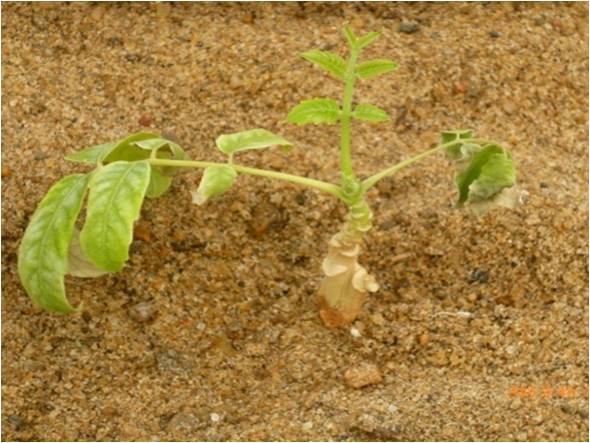It is an important disease problem in nurseries, vegetative multiplication areas and young plantations of important tree species viz., Acacia, Albizia, Bamboos, Casuarina, Eucalyptus, Gmelina, Melia, Neem, Cadamba, Sandal, Teak, etc.
Forestry species such as Acacia, Albizia, Bamboos, Casuarina, Eucalyptus,
Gmelina, Melia, Neem, Cadamba, Sandal, Teak, etc are affected by collar rot disease.
Soil and root borne like Fusarium, Lasiodiplodia, Rhizoctonia, Sclerotium etc. and bacteria viz., Pseudomonas are the causal organisms reported on different forestry crops. Collar rot disease caused by Lasiodiplodia theobromae was reported for the first time in one year old saplings of C. junghuhniana in IFGTB nursery, Coimbatore.
1. Drying of needles, branches and stem is the major symptom.
2. Small, black coloured sporulation and fruiting bodies are observed in the collar region of the affected saplings.
3. Severely affected saplings succumb to the attack of the disease.
The disease can be managed by an integrated approach involving measures such as sanitation, cultural practices and use of fungicides. The disease incidence can be minimized by protected irrigation during summer and fortnightly application of fungicidal solution (Bavistin or Dithane M-45 @ 0.1% a.i.) as soil drenching. After 15 to 30 days of fungicidal application, the seedlings need to be applied with bio-control agents such as Pseuodomonas fluorescence and Trichoderma viride for effective management of the disease.
Bacterial collar rot symptoms on Ailanthus excelsa seedlings

Collar rot disease on Casuarina junghuhniana

Collar rot disease on Casuarina junghuhniana




